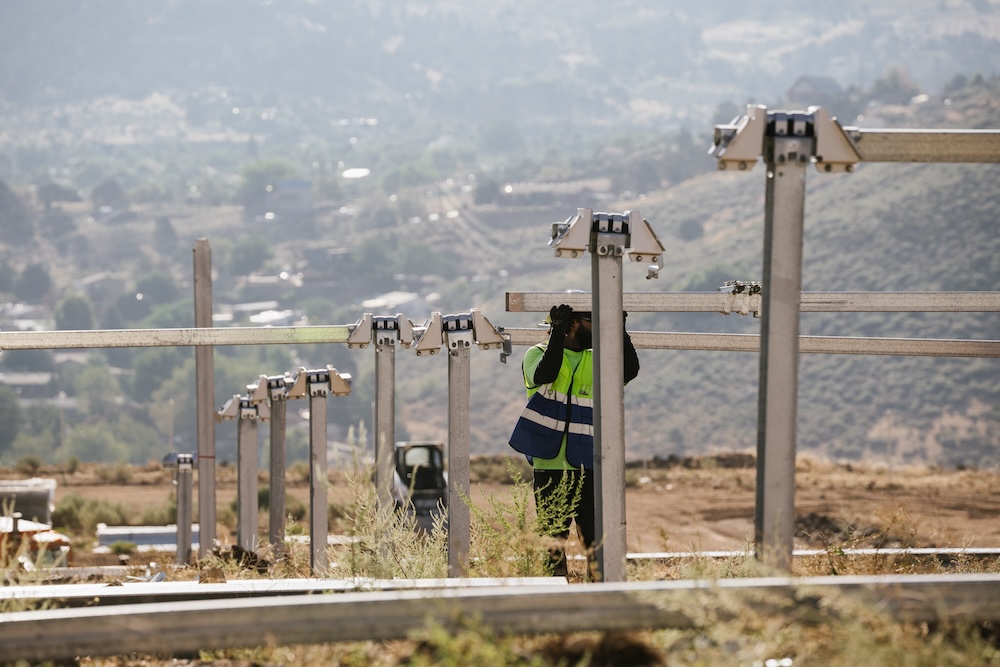When you picture a solar farm, you probably think of a large, flat, desert site with uniform rows of ground-mounted solar panels. For the last couple decades, this has certainly been the norm. But as the U.S. faces a growing need for renewable energy, these “ideal” solar sites are becoming more scarce. Thankfully, advancements in solar tracker technology are expanding solar farm site selection criteria and opening up new possibilities for developers. Before we dive into how things have changed, though, let’s take a look back at the criteria that have guided solar farm site selection up to this point.

The Old Solar Farm Site Selection Criteria
While the exact criteria for selecting a solar farm site differ on a case-by-case basis, the following are high-level considerations that have been widely accepted over the years.Size
There is no official minimum size for a potential solar farm site, but a good rule of thumb is that each direct current (DC) megawatt (MW) requires approximately five acres of buildable land. This means that to build a 30MW solar farm, you would need about 150 acres of buildable land.Topography
Even if a potential solar farm site has 150+ acres of available land, its topography plays a big role in whether or not that land is considered “buildable”. Historically, solar developers have considered sites with a slope greater than five degrees to be unsuitable. This is largely due to two factors:- The inability of existing solar trackers and foundation systems to be installed on rolling or sloped terrain.
- The cost, permitting requirements, and risks associated with grading large solar farm sites.
Land Features
Solar farm sites can also be disqualified due to being located in a floodplain, wetland, or protected area. Similarly, sites with an increased risk of differential settlement due to earthquakes, soil instability, or a history of underground mining may also be disqualified because traditional solar trackers cannot withstand differential settlement events.Local Community Buy-In
Solar projects also have had to contend with approval from the local community to proceed with development. Often communities are hesitant initially since they feel it will be unsightly and don’t understand how it will benefit them.Climate
Solar farm sites in areas at risk of hurricanes, flooding, and high winds have also historically been ruled out due to the potential damage they can cause traditional solar trackers and other PV system equipment.How Nevados Is Changing the Game
The Nevados All Terrain TrackerⓇ (ATT)Ⓡ is an industry-leading solar tracker that allows developers and EPCs to build on previously “unbuildable” terrain. The ATT is designed to adapt to any natural terrain thanks to its innovative articulating bearings and discrete torque tubes. As a result, the ATT can handle post-to-post angle changes of up to 26% and overall slopes of up to 37%, effectively eliminating the need for grading. The same features that enable the ATTⓇ to follow terrain also allow it to adapt to differential settlement events, opening up even more site possibilities in areas where ground movement is a possibility. The ATTⓇ has also been proven to withstand category-three hurricane winds without any damage thanks to features like automated stowing protocols, and wind dampening that is integrated right into the bearings.Selecting New Solar Sites With the All Terrain TrackerⓇ
The Nevados All Terrain TrackerⓇ is changing the landscape of utility-scale solar. Rather than seeking out naturally flat spaces or needing to grade rugged properties, solar developers can now get optimal solar performance on undulating and sloped terrain. Contact us to learn more about the All Terrain Tracker and explore how it can help you expand your portfolio.



